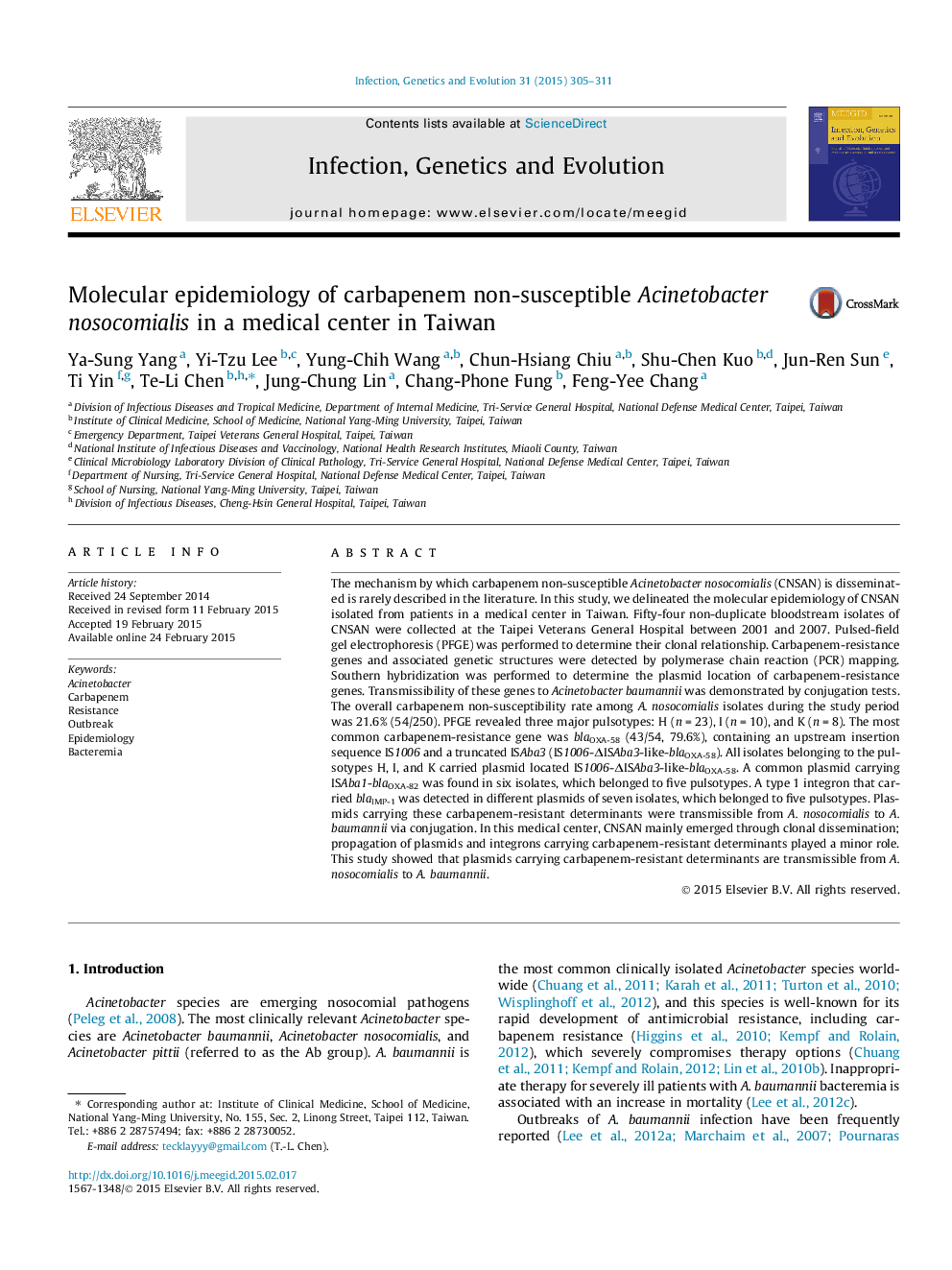| کد مقاله | کد نشریه | سال انتشار | مقاله انگلیسی | نسخه تمام متن |
|---|---|---|---|---|
| 2823033 | 1570172 | 2015 | 7 صفحه PDF | دانلود رایگان |

• Carbapenem non-susceptible Acinetobacter nosocomialis (CNSAN) is an emerging nosocomial pathogen.
• This study investigated the epidemiology and carbapenemases genes of bacteremic isolates of CNSAN in a medical center in Taiwan.
• The emergence of CNSAN is majorly caused by the dissemination of three endemic clones harboring IS1006-ΔISAba3-like-blaOXA-58.
• Dissemination of plasmids harboring ISAba1-blaOXA-82 and integron-borne blaIMP-1 also played a minor role in the emergence of CNSAN.
The mechanism by which carbapenem non-susceptible Acinetobacter nosocomialis (CNSAN) is disseminated is rarely described in the literature. In this study, we delineated the molecular epidemiology of CNSAN isolated from patients in a medical center in Taiwan. Fifty-four non-duplicate bloodstream isolates of CNSAN were collected at the Taipei Veterans General Hospital between 2001 and 2007. Pulsed-field gel electrophoresis (PFGE) was performed to determine their clonal relationship. Carbapenem-resistance genes and associated genetic structures were detected by polymerase chain reaction (PCR) mapping. Southern hybridization was performed to determine the plasmid location of carbapenem-resistance genes. Transmissibility of these genes to Acinetobacterbaumannii was demonstrated by conjugation tests. The overall carbapenem non-susceptibility rate among A. nosocomialis isolates during the study period was 21.6% (54/250). PFGE revealed three major pulsotypes: H (n = 23), I (n = 10), and K (n = 8). The most common carbapenem-resistance gene was blaOXA-58 (43/54, 79.6%), containing an upstream insertion sequence IS1006 and a truncated ISAba3 (IS1006-ΔISAba3-like-blaOXA-58). All isolates belonging to the pulsotypes H, I, and K carried plasmid located IS1006-ΔISAba3-like-blaOXA-58. A common plasmid carrying ISAba1-blaOXA-82 was found in six isolates, which belonged to five pulsotypes. A type 1 integron that carried blaIMP-1 was detected in different plasmids of seven isolates, which belonged to five pulsotypes. Plasmids carrying these carbapenem-resistant determinants were transmissible from A. nosocomialis to A. baumannii via conjugation. In this medical center, CNSAN mainly emerged through clonal dissemination; propagation of plasmids and integrons carrying carbapenem-resistant determinants played a minor role. This study showed that plasmids carrying carbapenem-resistant determinants are transmissible from A. nosocomialis to A. baumannii.
Journal: Infection, Genetics and Evolution - Volume 31, April 2015, Pages 305–311